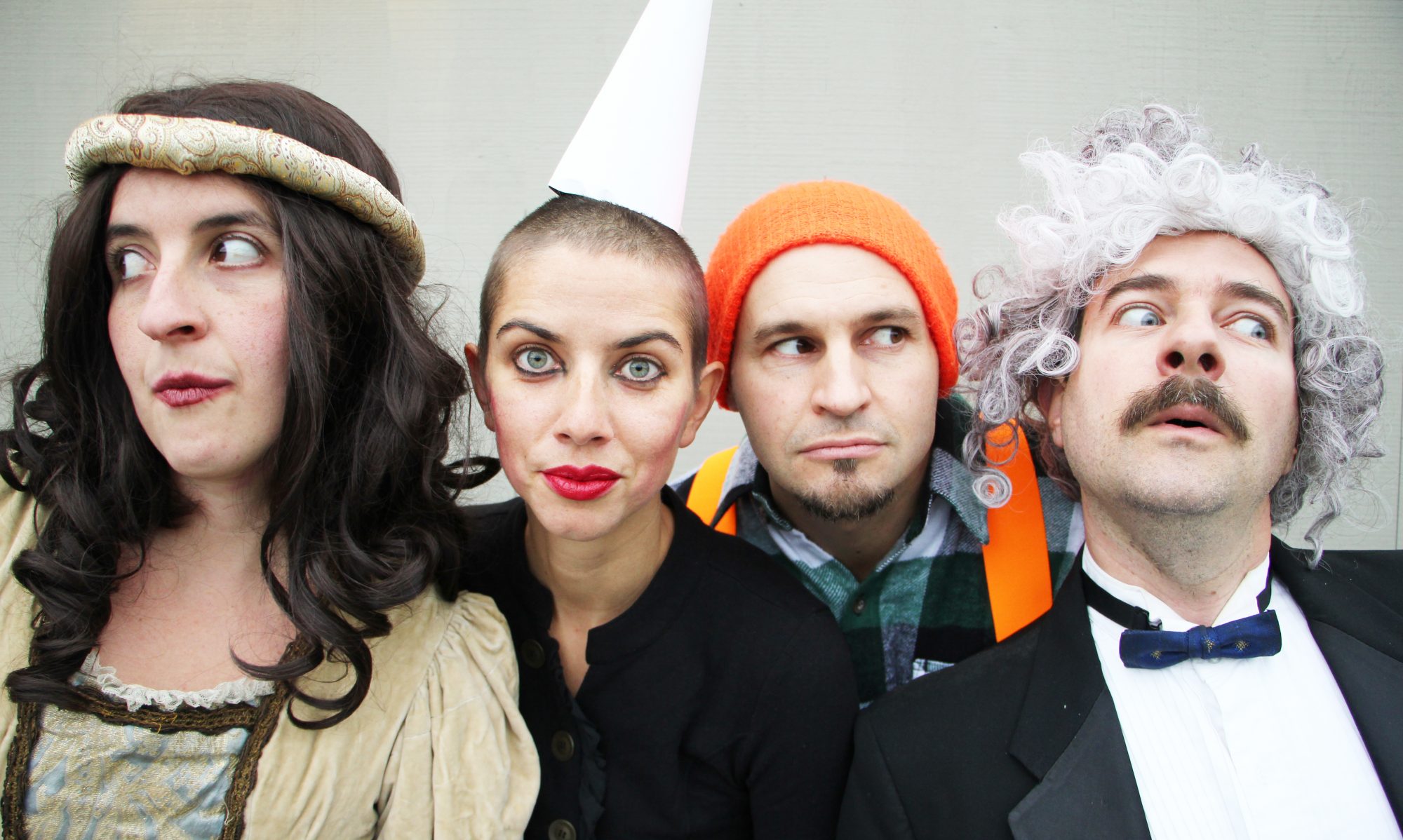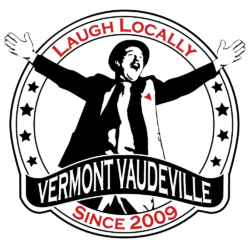A brief overview of the history of Vaudeville, excerpted from Vaudeville Old and New: An Encyclopedia of Variety Performances in America, by Frank Cullen, Florence Hackman, and Donald McNeilly.
Vaudeville was more than an assembly of ragtime pantaloons, monologists, eccentric dancers, barrelhouse songbirds, ventriloquists, magicians, tumblers, and jugglers, more than a coast-to-coast network of once-gilded theaters now shambling into plaster dust. Vaudeville was a people’s culture.
Some scholars have focused on France as the birthplace of vaudeville. The word itself is thought to derive from the val-de-Vire, a river valley in Normandy, home to the 15th-century poet Oliver Basselin. He wrote popular songs, some say drinking songs, which he named chansons du vau-de-Vire, after his native valley. At agricultural fairs, around the close of the seventeenth century, these songs, refreshed with topical lyrics, were put together with sketches and called vaudevilles.
To say that vaudeville originated in Normandy or Paris does little to explain American vaudeville. The entrepreneurs who first labeled their entertainments vaudeville, likely had no clear understanding of the word’s origins. These men were street-smart promoters, not cultural anthropologists, and they were persuaded to call their offerings vaudeville because it sounded French, and if something were French, it was presumed classy, fancy and lively.
Variety and vaudeville were unlike plays and opera because they brought together a series of unrelated acts on a single bill. There was no unifying theme or scheme, as was found in classic drama, melodrama, comic opera, operetta, and burettes (burlesque). The bills were a mixture of recitations, ballets and hornpipes, songs from the concert repertoire as well as lighter melodies, and dramatic and comedy sketches. (Ed: Many of these acts featured performers, both black and white, appearing in blackface, as well as comedy and dance based in cruel and exaggerated ethnic stereotypes.)
Vaudeville developed into a big business. Its growing popularity prompted the building of more and ever-larger theaters. Modern American show business had arrived. It was a by-product of a uniform system of railroads, the telegraph and telephones, willing bankers, aggressive lawyers, a popular daily press and a nation expanding in size and opportunity. As more people with theatrical ambitions turned to vaudeville, they found talent was not enough. They had to have an act, and an act could only be developed through the experience of playing to vaudeville audiences to discover what they liked and what they did not.
It is difficult to estimate the number of theaters that played vaudeville at any given time between the 1870’s and the 1930’s. There are approximately 800-1,200 big-time vaudeville houses that more or less maintained a two-(shows)-a-day policy. In addition to the recognized vaudeville chains and theatres, there were more than 1,000 other venues that booked vaudeville. On most weekend nights in the hundreds of small towns down south, on the Great Plains, and in the Rocky Mountain states, shows were put on in converted churches and grange halls, tents, auditoriums, or any space that could accommodate enough folks to make the venture pay.
There were four major factors at play in the decline of vaudeville: First was Hollywood. Silent films, already jostling vaudeville for popularity, added sound in 1926. A second factor affecting vaudeville’s viability was radio. By the early 1930’s, people were staying home to listen to Rudy Vallee, Amos ’n Andy, and Kate Smith. A third event was the stock market crash of 1929. What little money families could spend on entertainment went for a new radio or cheap movie tickets. There was another reason for vaudeville’s slow eclipse, one that sometimes has been ignored or denied. Vaudeville, once the cheeky upstart of show business, had lost its novelty as it grew more polished with the decades. Critics and customers complained that it had become too homogenized, too predictable, complacent, hackneyed, and stale.
The institution of vaudeville was peculiar to its time and places and there will never again be vaudeville as the people of the USA once knew it: a vibrant branch of show business filling theaters coast to coast. In the last four decades of the twentieth century, however, a small-scale revival of the vaudeville spirit and skills began. Whether as street entertainers, fairground re-creators or performance artists, the variety arts and new vaudevillians are heirs to thousands of years of traditional skills, and they restore vitality to old arts by adapting them for their own time and place.
Institutionalized Racism in Vaudeville’s History
Vermont Vaudeville acknowledges the complex and sometimes ugly history of Vaudeville entertainment. We stand against the elements of minstrelsy and blackface that were often a feature of Vaudeville shows through history. And yet, we do not dismiss the profound, beautiful, and hilarious contributions of those black performers who graced the old Vaudeville stage. In spite of the fact that they were often limited to a very specific script or set of standards (i.e. the “Cakewalk”, blackface, acts based on broad and cruel stereotypes), these performers contributed so much to the legacy and art of variety theater. The playwright Jeremy V. Morris has pointed out, “Everybody seems to know about Al Jolson, but not about Bert Williams. They don’t know about Aida Overton, but they know about Fred Astaire. That’s a crime, in and of itself. These were the heroes of the time as far as what they faced and how they faced it— bravely and creatively. These performers were able to wield a social justice message, and were able to comment upon the society and push it forward through entertainment”.
Additional Resources
https://howlround.com/theatre-history-podcast-19
https://www.youtube.com/watch?v=8kbnn3E7Gp8
https://syncopatedtimes.com/how-to-cake-walk-by-aida-overton-walker-1903/
https://www.newyorker.com/magazine/2005/12/12/behind-the-mask

